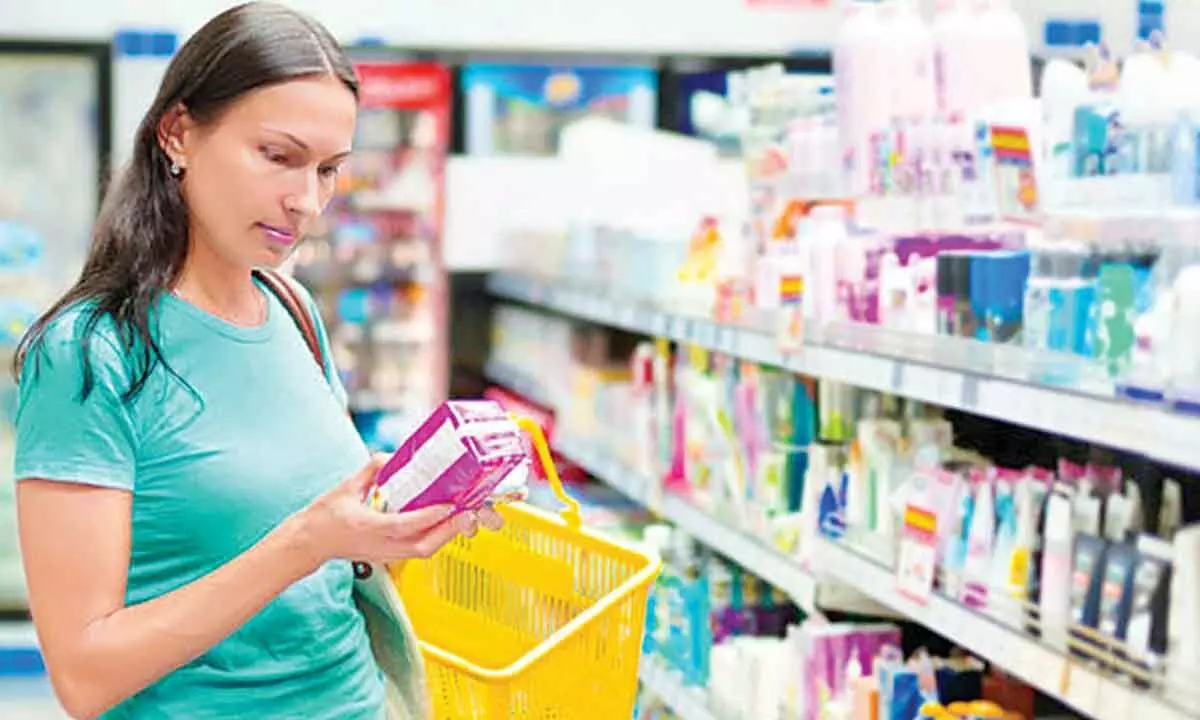Live
- Uddhav Thackeray to PM Modi: Pay attention to Bangladesh, act to end Hindus’ misery
- Allu Arjun Arrested: KTR Reacts on X, Calls Arrest Unfair
- Bold steps by Modi govt in reviving Indian heritage, culture: Union Minister
- What are the charges against Allu Arjun: Understanding the Charges Against Him
- Allu Arjun Objects to Arrest Procedure, Requests Breakfast and Change of Clothes
- ‘Fear’ movie review: A gripping suspense thriller
- Phenom Successfully Hosts IAMPHENOM India, Transforming the Future of Work with AI, Automation, and Talent Experience
- Constitution provides shied, guarantee to Indians: Priyanka in LS
- Allu Arjun’s Quash Petition Hearing at 2:30 PM; Chiranjeevi Visits Police Station
- Bommai hails 'One Nation, One Election' move as PM Modi’s bold decision
Just In
Why women hesitate to invest in menstrual hygiene products


Menstruators on average have about 450 periods during their lifetime which translates to 7 youthful and productive years spent menstruating.
Menstruators on average have about 450 periods during their lifetime which translates to 7 youthful and productive years spent menstruating. Damn!! The agony and the pain, it's real. Periods are directly related to mental, reproductive, and skin health. As per a 2017 report, women in India spend about Rupees two hundred per month on their periods, whereas women in developed countries invest nothing less than rupees 1500 to 2000 on their menstrual health.
Then why do women in India not spend enough on their monthly period needs?
Urban India is one of the largest consumer markets in the world and women are the key decision makers and buyers in any middle-class household. Indian consumers have jumped into the bandwagon of all global trends be it Korean beauty, international cosmetics, fast fashion, or food hauls. Indian consumers across all geographies are comfortable upgrading their spending on everyday essentials such as body washes, and food to luxury items like perfumes and jewelry. However, when it comes to menstrual hygiene and health an uptick on spends is not visible.
This trend suggests that the low perceived value for menstrual health and hygiene ensures the avoidance of investment in a known devil called "Periods". Or it could be because of the traditional and cheaper alternatives available for the menstruators like plastic sanitary pads or homemade cloth pads which have proven to be harmful in the long run for our bodies and environment and do not provide adequate support for a comfortable period.
In rural areas, lack of awareness, deep-entrenched stigma, and low spending capability pushes menstruators to use clothes, newspapers, leaves, and other unhygienic alternatives. But is the rural mindset any different than the urban mindset when it comes to period care? Why is period still considered a luxury when it is a monthly recurring phenomenon? Do you think the habit shift or spending would have been higher if the menstruators were men?
Each month menstruators go through a range of hormonal and physical shifts leading to mood swings, fatigue, rashes, cramps, urinary tract infections, and more. Lifestyle disorders like PCOS/PCOD, infertility, and cervical cancer are rapidly growing and are directly linked to menstrual health management. Reports by the government of India and UNICEF suggest a lack of awareness and a deep-rooted period of poverty in our country.
Greater than 50% of Indian menstruators which sums to around 200 million women, do not have access to period care products or are not keen on investing any money in improving their MHM. State and central Government initiatives are diverting thousands of crores to improve the current state of period poverty in India but are we really experiencing a habit shift? Is this a wicked problem like world hunger that can't be solved? As the founder of a new age period care brand, I feel compelled to ask this question to the readers. Please spare 10 mins of your valuable time for those 7 years a menstruator spends menstruating. Why are we not investing in better period care alternatives?
But then the dilemma is if every menstruator uses a sanitary pad and maintains good health, then how much sanitary waste India will generate each year? Basic maths suggests 8400 crore units of non-biodegradable sanitary pads will get dumped into our water bodies and ground each year which will not decompose for 500-800 years. Phew!! Isn't it better that Indian women aren't investing in period care, at least period poverty in the country supports a healthier environment. Let's stop evaluating this vicious cycle and support the growth of our 350+mn menstruators in the country and help families understand the importance of investing in sustainable period care.
For example, products like reusable menstrual cups are one-time investment products and can be used for up to 10 years. Menstrual cups are popular amongst young menstruators who prefer affordable and sustainable alternatives and are not hassled by exploring their needs. For a no-stain period experience, Reusable period underwear is a must-have for all school and college girls. Another sustainable period care product that provides ultimate comfort and is good to have for all is chemical-free, certified organic & 100% biodegradable tampons.
Periods are important, and proper menstrual health will ensure long-term economic, physical, and mental growth. Let's bring healthy inclusivity and open conversation and luster back to period care and provide much-deserved importance to period health management. Invest in your young ones and your period health today for a brighter, healthier, and more confident future.

© 2024 Hyderabad Media House Limited/The Hans India. All rights reserved. Powered by hocalwire.com






